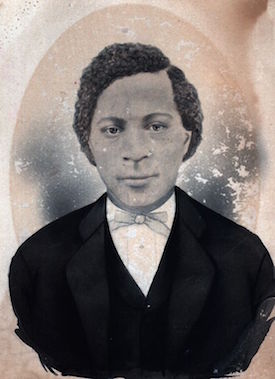Hiram Young

Sometime in the mid-19th century, Hiram Young came to antebellum Missouri as a slave. After the death of his owner, Young was given his freedom and eventually was able to buy the freedom of his wife, Mathilda, by crafting and selling ox yokes. From Greene County near Springfield, Mo.,Young and his wife moved to Independence, Mo., where their new location near the Oregon and Santa Fe Trail systems would afford him a lucrative career opportunity. He built wagons, yokes, and other equipment for travelers and immigrants headed out West. Within the span of about 10 years, Young’s small outfit became one of the largest wagon companies in the region. Hiram Young and company, during its heyday, employed 20 men and was one of the most profitable companies in all of Jackson County, Mo. Young’s staff consisted primarily of slaves that he would purchase and then allow to eventually earn their freedom while working for him.
Young would later describe himself as a “colored man of means.” His place as a free and wealthy black man in a state in which slavery was still legal eventually caused some friction. After the onset of the Civil War, Young and his family moved to Kansas, as slavery remained illegal there and racial tensions were slightly less tumultuous. After the war’s end, Young moved back to Independence and continued work with his wagon company. He helped to establish Saint Paul’s African Methodist Episcopal Church (a fixture in the black community of the time, which still stands on North 33rd Street in Kansas City, Kans.) and would go on to make history as one of the few black business owners to sue the U.S. government for revenue losses attributed to the Civil War. Young would not live long enough to see the outcome of his lawsuit, however. He died in Independence, Mo., in 1882. Being so well respected by his community, Young was buried in the white section of Woodlawn Cemetery in Independence, Mo.










